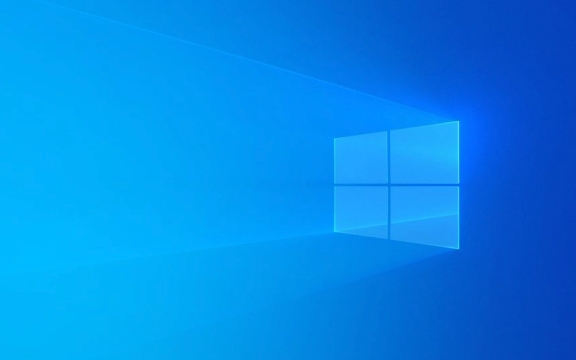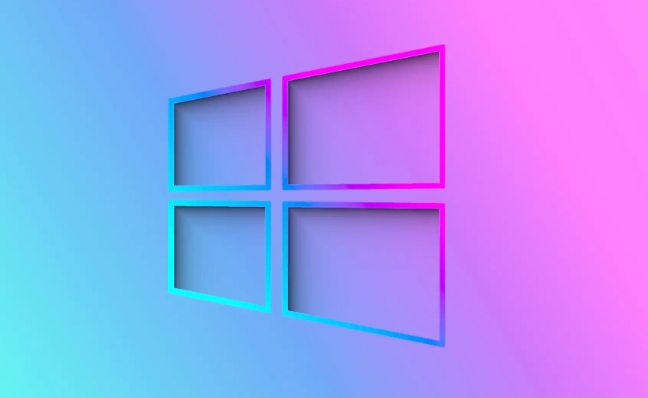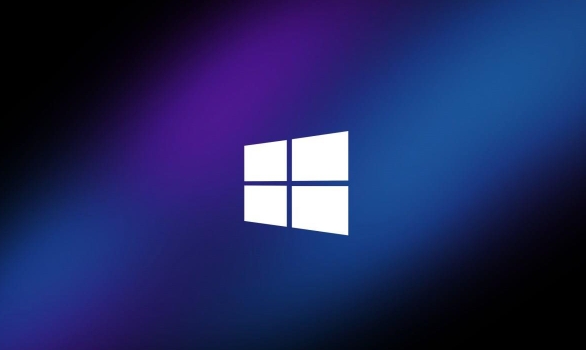How to disable Timeline in Windows
Disable Timeline via Settings by turning off "Let Windows collect my activities from this PC" and "Store my activity history on this device" in Privacy & Activity history (Windows 10) or System & Shared experiences (Windows 11). 2. Turn off Timeline in Task View by opening Win Tab, clicking the gear icon, and toggling off "Show Timeline" or "Show suggestions occasionally in Task View". 3. Use Group Policy (Windows 10/11 Pro or Enterprise) by navigating to Computer Configuration > Administrative Templates > System > Activity Feed and setting "Enable Activity Feed" to Disabled. 4. Edit the Registry on all Windows versions by going to HKEY_LOCAL_MACHINE\SOFTWARE\Policies\Microsoft\Windows\System, creating a DWORD named EnableActivityFeed, setting its value to 0, and restarting the computer—this method requires manual key creation if missing and should be done with a backup. Disabling Timeline reduces distractions, enhances privacy, and minimizes background data collection, with the Settings method being sufficient for most users while Group Policy or Registry edits offer more permanent results.

Disabling Timeline in Windows is useful if you want to reduce distractions, improve privacy, or just prefer a simpler task-switching experience. Here’s how to turn it off in Windows 10 and Windows 11.

1. Disable Timeline via Settings (Windows 10 & 11)
The easiest way to disable Timeline is through the system Settings:
-
Open Settings (press
Win I) - Go to Privacy > Activity history (in Windows 10) or System > Shared experiences (in Windows 11)
- Uncheck the box for "Let Windows collect my activities from this PC"
- Also uncheck "Store my activity history on this device" if present
This stops Windows from recording your app and file usage, effectively disabling Timeline functionality.

2. Turn Off Timeline in Task View
Even after disabling activity history, you might still see the Timeline section in Task View. To remove it:
- Press
Win Tabto open Task View - Click the Settings icon (gear symbol) in the lower-right corner of the Timeline panel
- Toggle off "Show Timeline" or "Show suggestions occasionally in Task View"
This removes the Timeline section from the Task View interface entirely.

3. Use Group Policy (Windows 10/11 Pro or Enterprise)
If you're using a Pro or Enterprise edition, you can disable Timeline via Group Policy:
- Press
Win R, typegpedit.msc, and press Enter - Navigate to:
Computer Configuration > Administrative Templates > System > Activity Feed - Double-click "Enable Activity Feed"
- Set it to Disabled
- Click Apply and OK
This prevents Timeline from functioning across the system and is more thorough than the Settings method.
4. Registry Edit (For All Windows Versions)
If Group Policy isn’t available (e.g., Home edition), you can use the Registry:
- Press
Win R, typeregedit, and press Enter - Navigate to:
HKEY_LOCAL_MACHINE\SOFTWARE\Policies\Microsoft\Windows\System - Right-click in the right pane > New > DWORD (32-bit) Value
- Name it
EnableActivityFeed - Double-click it and set its value to
0 - Restart your computer
Note: If the
Systemkey doesn’t exist, you may need to create it. Also, ensure you have a backup before editing the registry.
Disabling Timeline helps reduce background data collection and can slightly improve system performance. The Settings method works for most users, but Group Policy or Registry changes offer a more permanent solution.
Basically, just turn off activity history and hide the Timeline in Task View — that’s usually enough for everyday use.
The above is the detailed content of How to disable Timeline in Windows. For more information, please follow other related articles on the PHP Chinese website!

Hot AI Tools

Undress AI Tool
Undress images for free

Undresser.AI Undress
AI-powered app for creating realistic nude photos

AI Clothes Remover
Online AI tool for removing clothes from photos.

Clothoff.io
AI clothes remover

Video Face Swap
Swap faces in any video effortlessly with our completely free AI face swap tool!

Hot Article

Hot Tools

Notepad++7.3.1
Easy-to-use and free code editor

SublimeText3 Chinese version
Chinese version, very easy to use

Zend Studio 13.0.1
Powerful PHP integrated development environment

Dreamweaver CS6
Visual web development tools

SublimeText3 Mac version
God-level code editing software (SublimeText3)
 The computer's system tray icon is messy, how to organize it?
Aug 21, 2025 pm 08:12 PM
The computer's system tray icon is messy, how to organize it?
Aug 21, 2025 pm 08:12 PM
Hide the system tray icon without affecting the program operation, only removes the visual display; 2. Completely clean up and disable non-essential startup items through the task manager; 3. Resolve the mess and uninstall the software and develop the habit of canceling the bundling and checking during installation, so as to achieve the dual goals of visual refreshing and resource optimization.
 How to Troubleshoot Problems Updating Windows: A Microsoft Guide
Aug 22, 2025 am 11:54 AM
How to Troubleshoot Problems Updating Windows: A Microsoft Guide
Aug 22, 2025 am 11:54 AM
RuntheWindowsUpdateTroubleshootertoautomaticallyfixcommonissuesbynavigatingtoSettings>System>Troubleshoot>OthertroubleshootersandrunningtheWindowsUpdatetool.2.Ensureatleast20GBoffreespaceonthesystemdriveandmeetupdaterequirementsbyusingDiskCl
!['Activate Windows' Watermark Won't Go Away [4 Removal Tricks]](https://img.php.cn/upload/article/001/431/639/175574412212996.jpg?x-oss-process=image/resize,m_fill,h_207,w_330) 'Activate Windows' Watermark Won't Go Away [4 Removal Tricks]
Aug 21, 2025 am 10:42 AM
'Activate Windows' Watermark Won't Go Away [4 Removal Tricks]
Aug 21, 2025 am 10:42 AM
Ifthe"ActivateWindows"watermarkpersists,trythesesteps:1.ActivatewithavalidproductkeyinSettings.2.UseCommandPrompttomanuallyactivate.3.HidethewatermarkviaRegistryEditor.4.Useathird-partytoolcautiously.
 How to Fix 100% Disk Usage in Windows Task Manager.
Aug 21, 2025 am 05:45 AM
How to Fix 100% Disk Usage in Windows Task Manager.
Aug 21, 2025 am 05:45 AM
Ifyou'reexperiencing100%diskusageinWindows,trythesesteps:1.DisableWindowsSearchandSysMainservices.2.UpdatediskdriversviaDeviceManager.3.RunDiskCleanuptoremovetemporaryfiles.4.Adjustvirtualmemorysettingsmanually.5.TurnofftipsandsuggestionsinSettings.
 Fixed: Windows Is Showing 'A disk read error occurred'
Aug 21, 2025 am 02:10 AM
Fixed: Windows Is Showing 'A disk read error occurred'
Aug 21, 2025 am 02:10 AM
The“Adiskreaderroroccurred”messageistypicallycausedbyacorruptedMBR,faultycables,incorrectbootorder,orsoftwareissuesratherthanimmediatehardwarefailure.2.RestartthecomputerandcheckthatSATAandpowercablesaresecurelyconnected,andverifythecorrectbootorderi
 Win7 system taskbar icon display abnormally_Win7 tray icon garbled repair steps
Aug 21, 2025 pm 08:18 PM
Win7 system taskbar icon display abnormally_Win7 tray icon garbled repair steps
Aug 21, 2025 pm 08:18 PM
How to fix the abnormal display of Win7 taskbar icons include rebuilding the icon cache, adjusting display settings, checking system files, cleaning the registry and anti-virus. 1. Delete the IconCache.db file and restart to rebuild the icon cache; 2. Adjust the icon size and font settings through "personalization"; 3. Run the sfc/scannow command to check and repair the system files; 4. Add the IsShortcut key value to the registry; 5. Comprehensive anti-virus to ensure system security. Causes include cache corruption, virus infection, system file or registry issues, and hardware failures. Prevention methods include regular cleaning of junk files, updating anti-virus software, carefully installing software, backup system and updating drivers. Other uncommon tips include using system restore, uninstalling and beautifying software
 Fixed: Windows Is Getting 'An attempt was made to write to a read-only memory' Error
Aug 22, 2025 am 11:48 AM
Fixed: Windows Is Getting 'An attempt was made to write to a read-only memory' Error
Aug 22, 2025 am 11:48 AM
Update or rollback device drivers, especially graphics cards, chipsets and SSD drivers; 2. Run Windows memory diagnostic tools to detect and replace faulty RAM; 3. Use sfc/scannow and DISM commands to repair system files; 4. Restore default settings in BIOS to cancel overclocking; 5. Uninstall recently installed software or system updates in safe mode; 6. Run chkdsk to check for disk errors; 7. Update BIOS/UEFI firmware with caution; 8. As a last resort, perform a clean Windows installation after backing up the data. This error is usually caused by software or driver problems. In most cases, it can be solved through gradual troubleshooting without replacing the hardware. It can eventually be completely repaired through system reinstallation.
 Installing MongoDB on Windows
Aug 20, 2025 pm 03:06 PM
Installing MongoDB on Windows
Aug 20, 2025 pm 03:06 PM
DownloadMongoDBCommunityEditionfromtheofficialwebsite,selectingtheWindowsx64MSIpackage.2.RunthedownloadedMSIinstaller,chooseCompleteSetup,installMongoDBasaservice,andoptionallyskipMongoDBCompass.3.CreatethedatadirectorybymakingaC:\data\dbfolderusingF







